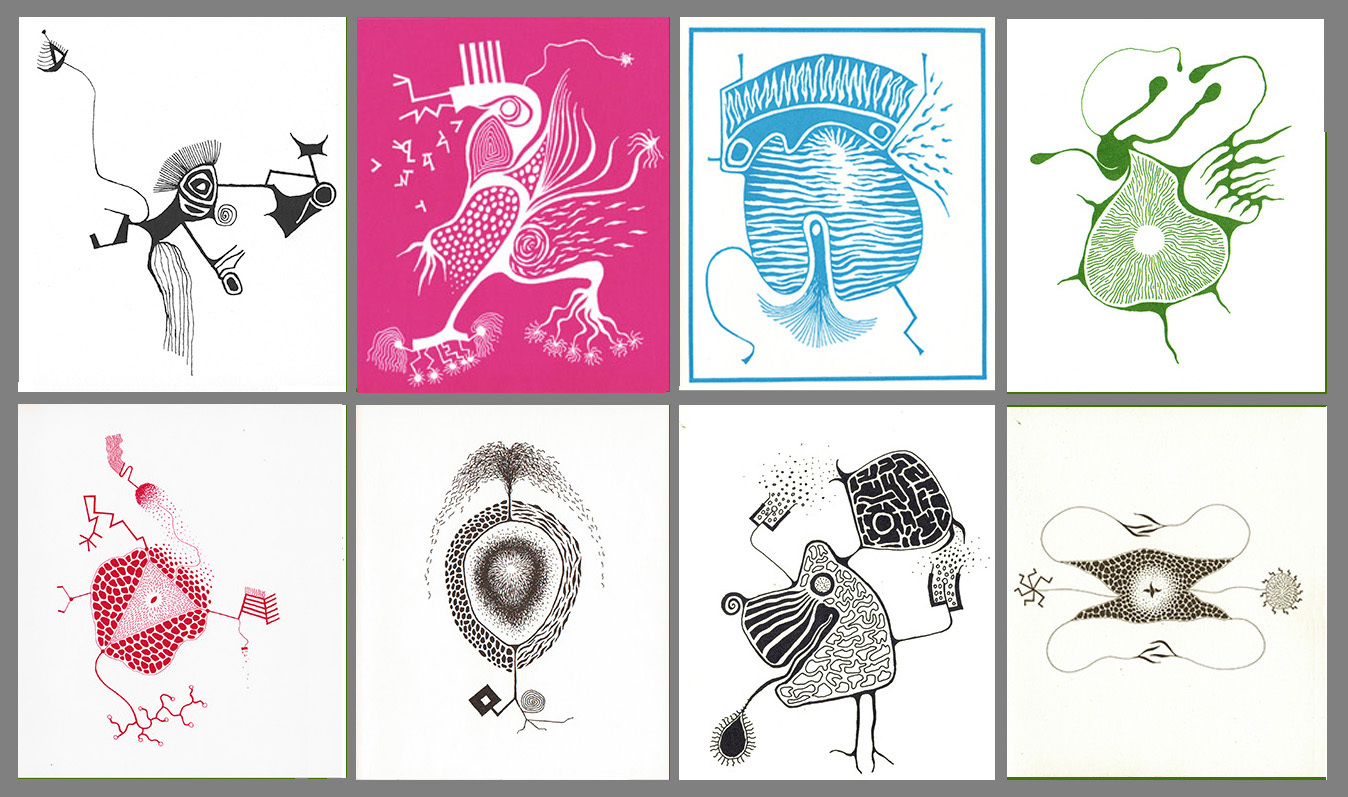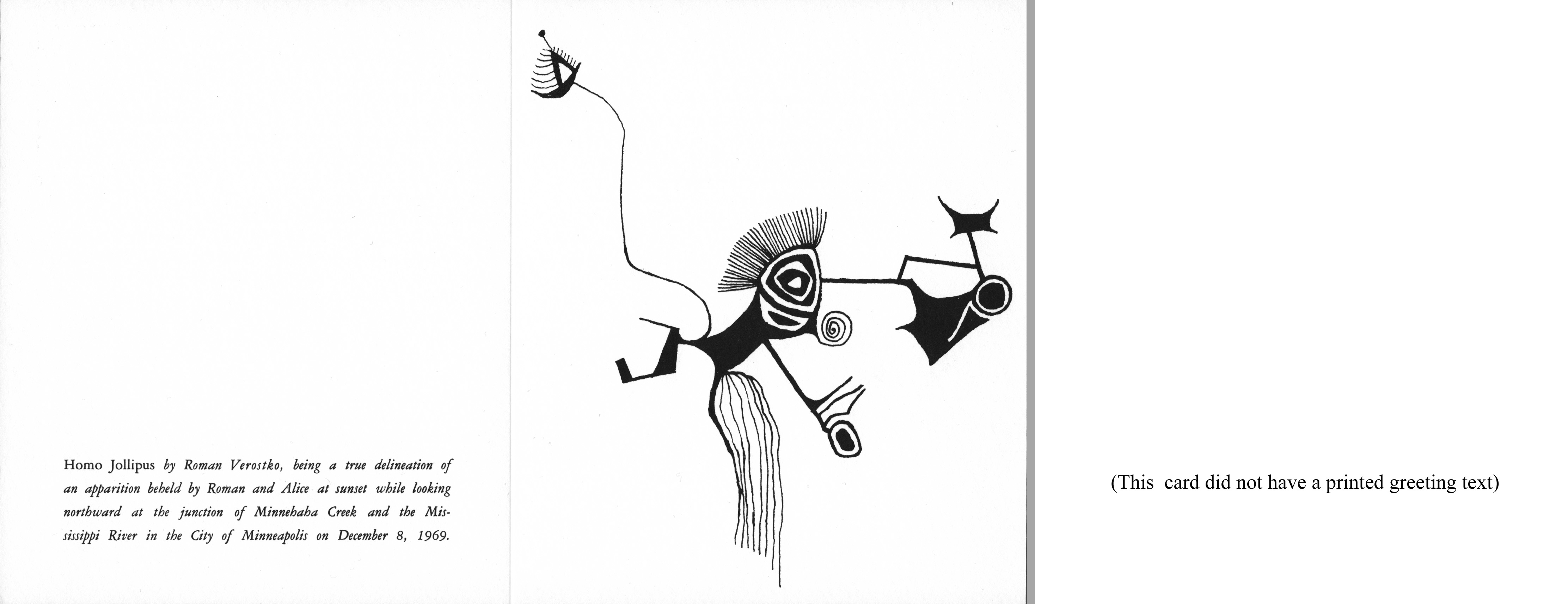|
Historic Visionary Greeting Cards, 1969 to 1976
|
|||
| In 1969 my wife Alice and I created our first imaginative holiday greeting. Our greeting grew from a vision we imagined to have occurred on December 8th of that year. For the next eight years we continued with another imagined apparition related in some way to a cultural concern for us in that year. |
We documented the time and location of the apparition on the back of the card. For each following year our apparition included a scriptural text related to a social concern evok-ed by our apparition. We printed the scripture text as a greeting on the right side of the opened card. The first card, Homo Jollipus, does not include a text. |
||
|
SCROLL DOWN
|
|||
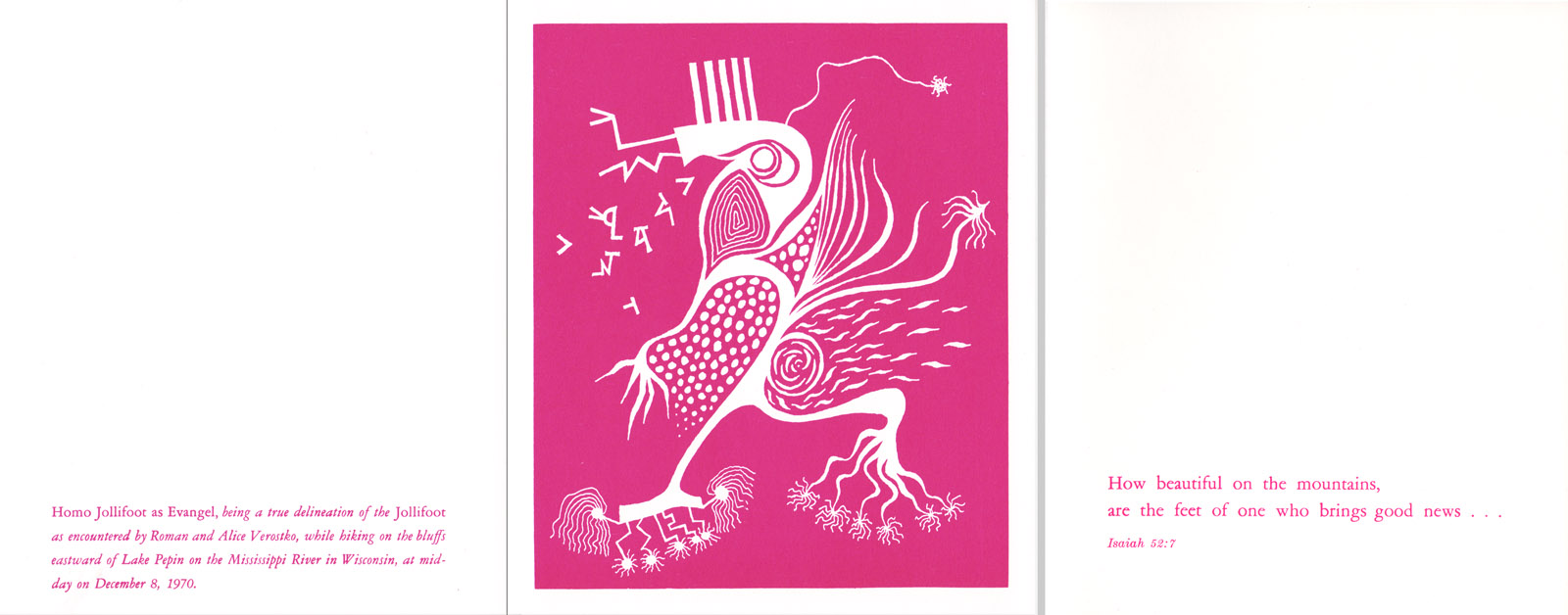 |
|||
|
Homo Jollifoot is included in
the
Upsidedown Mural. |
|||
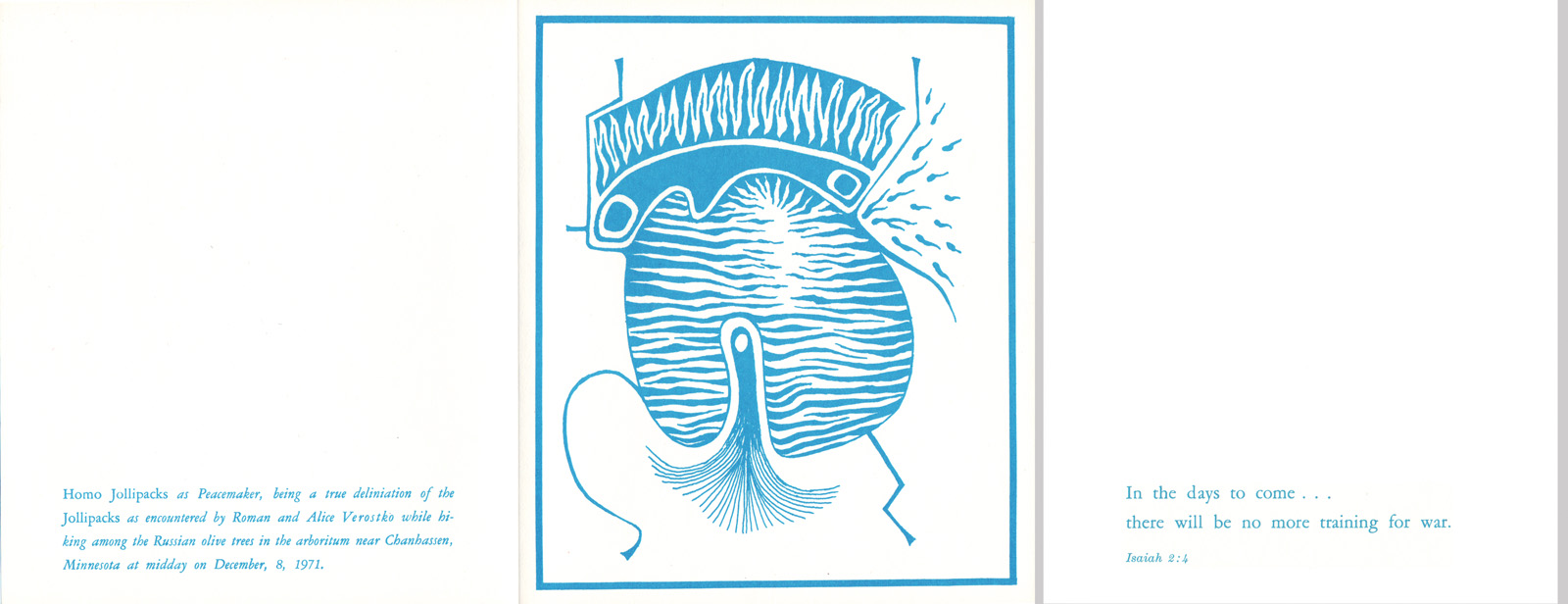 |
|||
|
Homo Jollipacks is included in
the
Upsidedown Mural.
|
|||
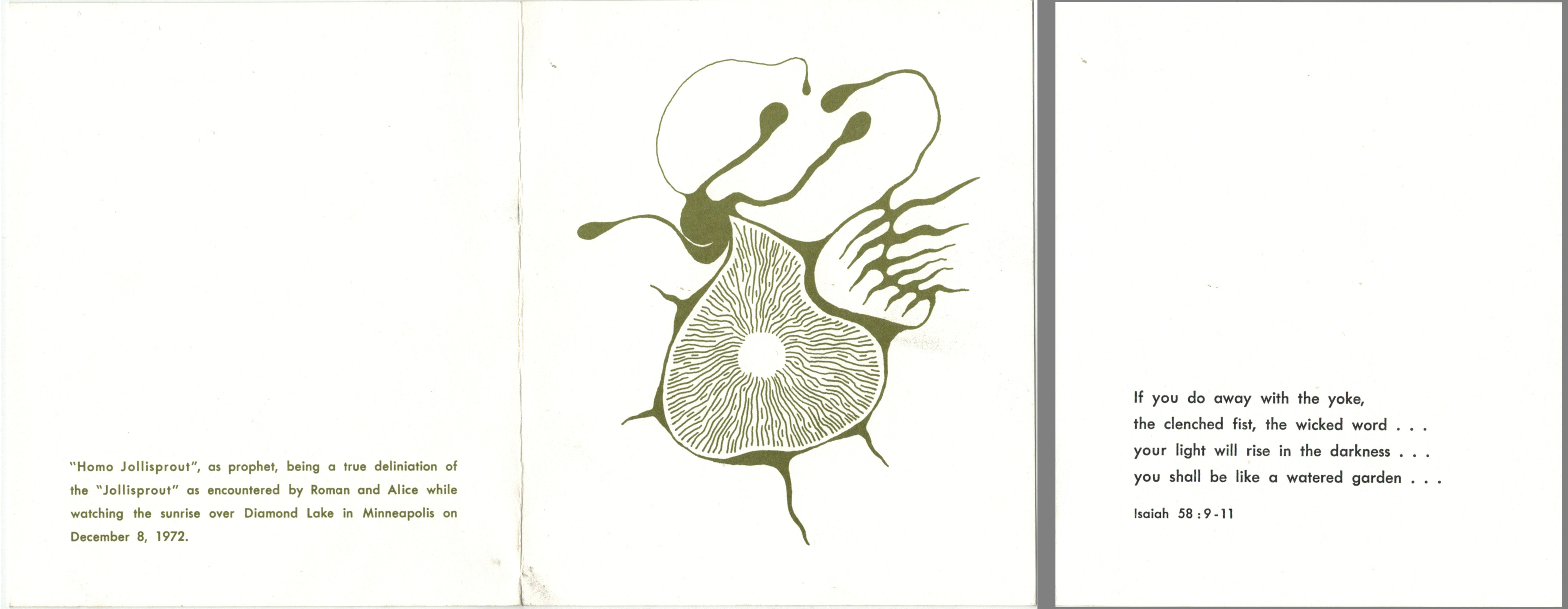 |
|||
|
Homo Jollisprout is included in
the
Upsidedown Mural.
|
|||
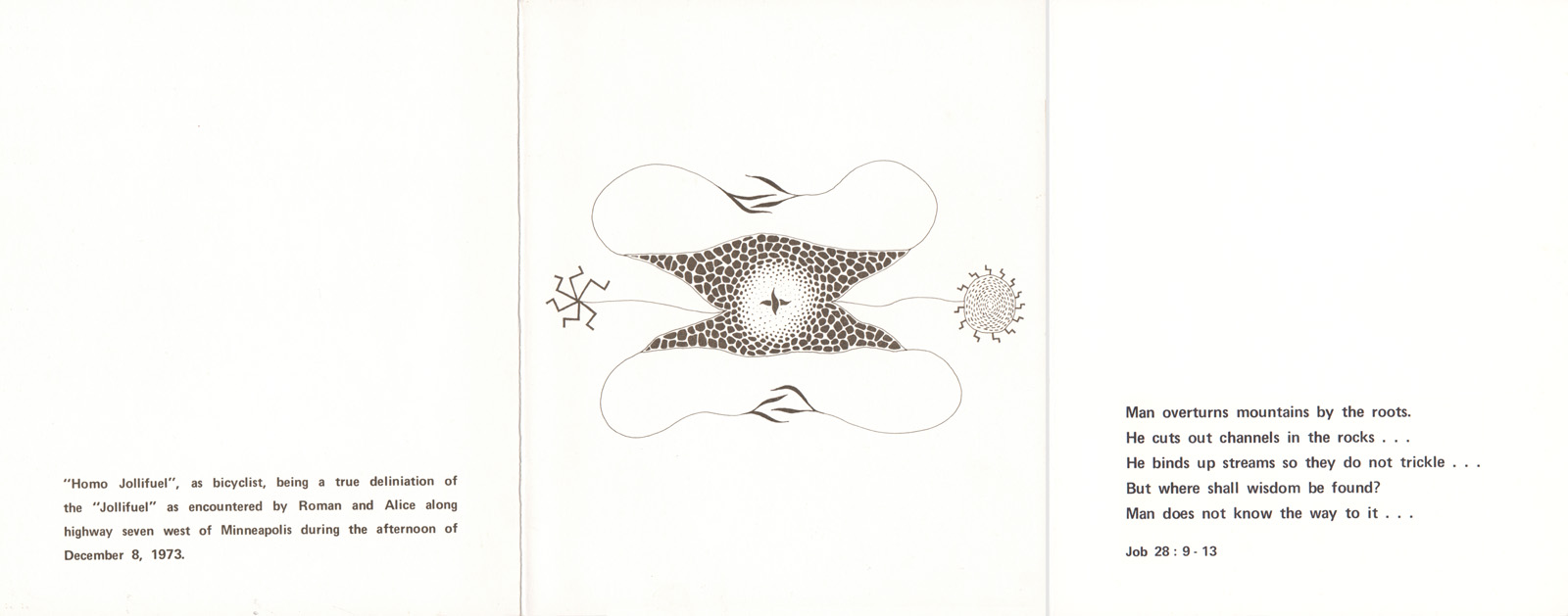 |
|||
|
Homo Jollifuel is included in
the
Upsidedown Book.
|
|||
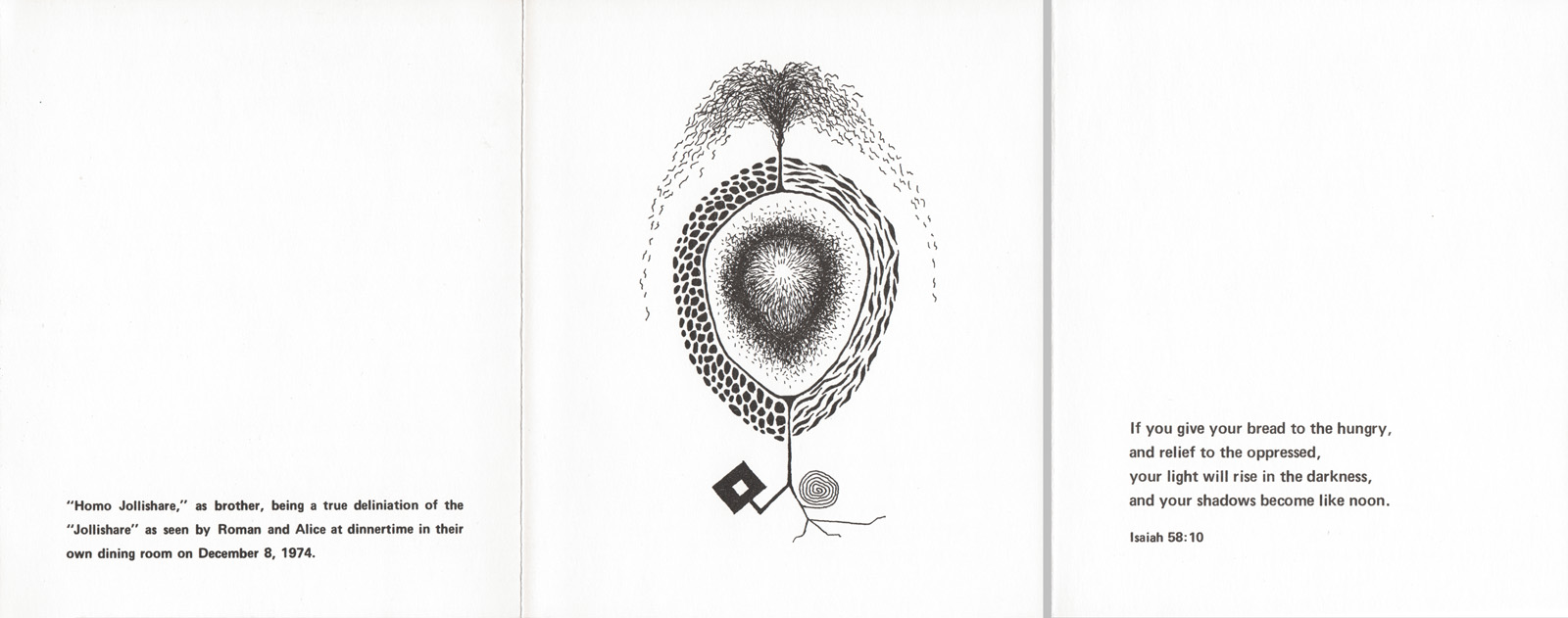 |
|||
|
Homo Jollishare is included in
the
Upsidedown Book.
|
|||
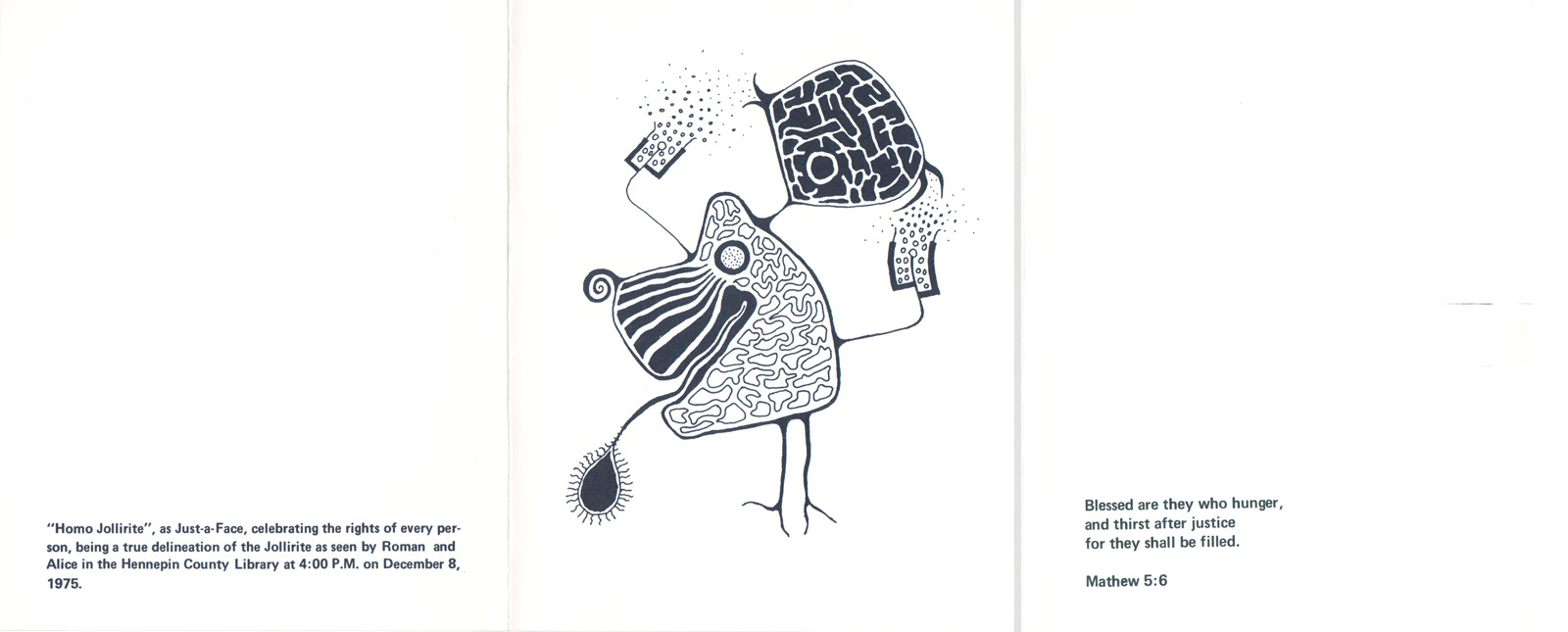 |
|||
|
Homo Jollirite is lincluded in the Upsidedown Mural. |
|||
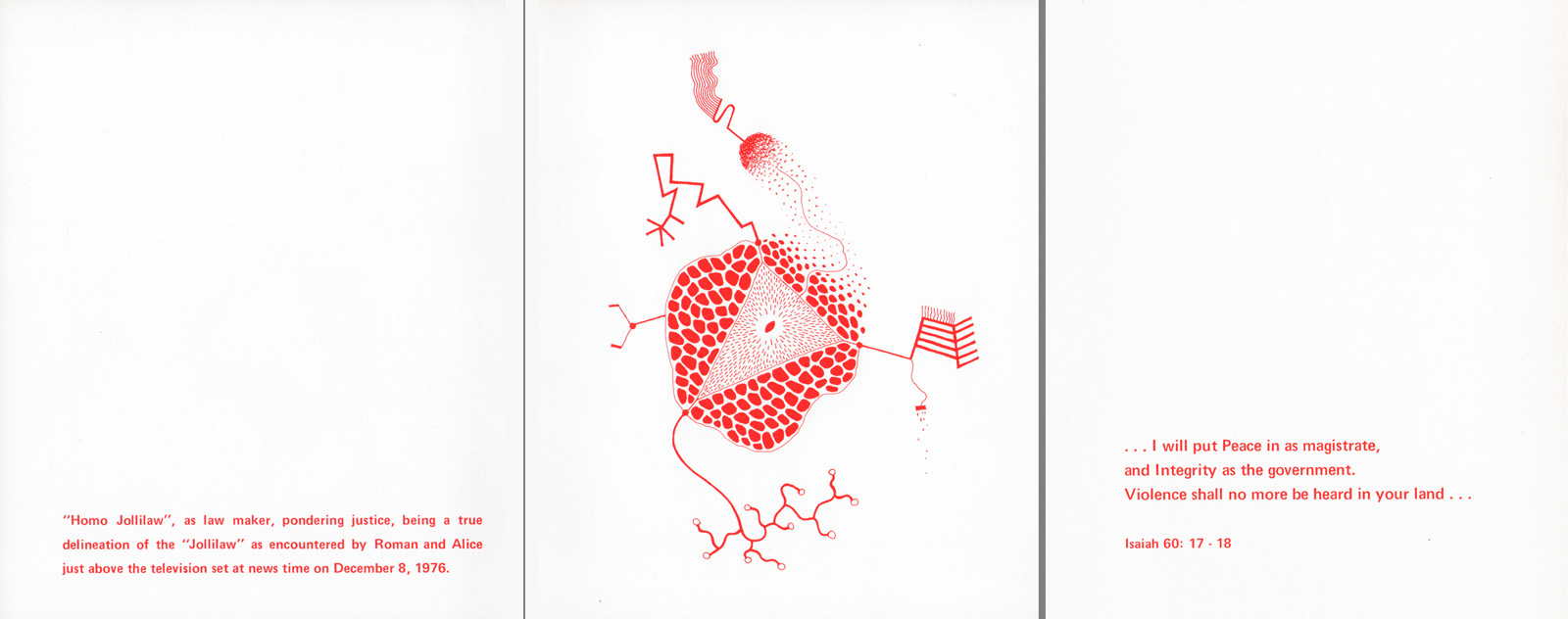 |
|||
|
Homo Jollilaw is included in
both the
Upsidedown Book and the Upsidedown Mural |
|||
|
■
Notes
on my 1970's Upsidedown
Drawings: In the 1970's, my wife Alice and I collaborated in creating illustrated Children's books. She created highly imaginative and playful texts and I created playful drawings to illustrate her writings. Over 30 years later, in 2008, we established Jewelweed Impressions for our arts publications.". Some of these Christmas card drawings, along with many others from that period, |
drawings, along with many others from that period, were adapted for the "Upsidedown Book and Upsidedown Mural In 2008 we published the Upsidedown Book for the dedication of the Fred Rogers Center that houses the Upsidedown Mural at the St Vincent College campus in Latrobe, Pennsylvania. The Verostko Center for the Arts is also located on this campus. |
main menu | site map | archive | history | search | contact | copyright | home
